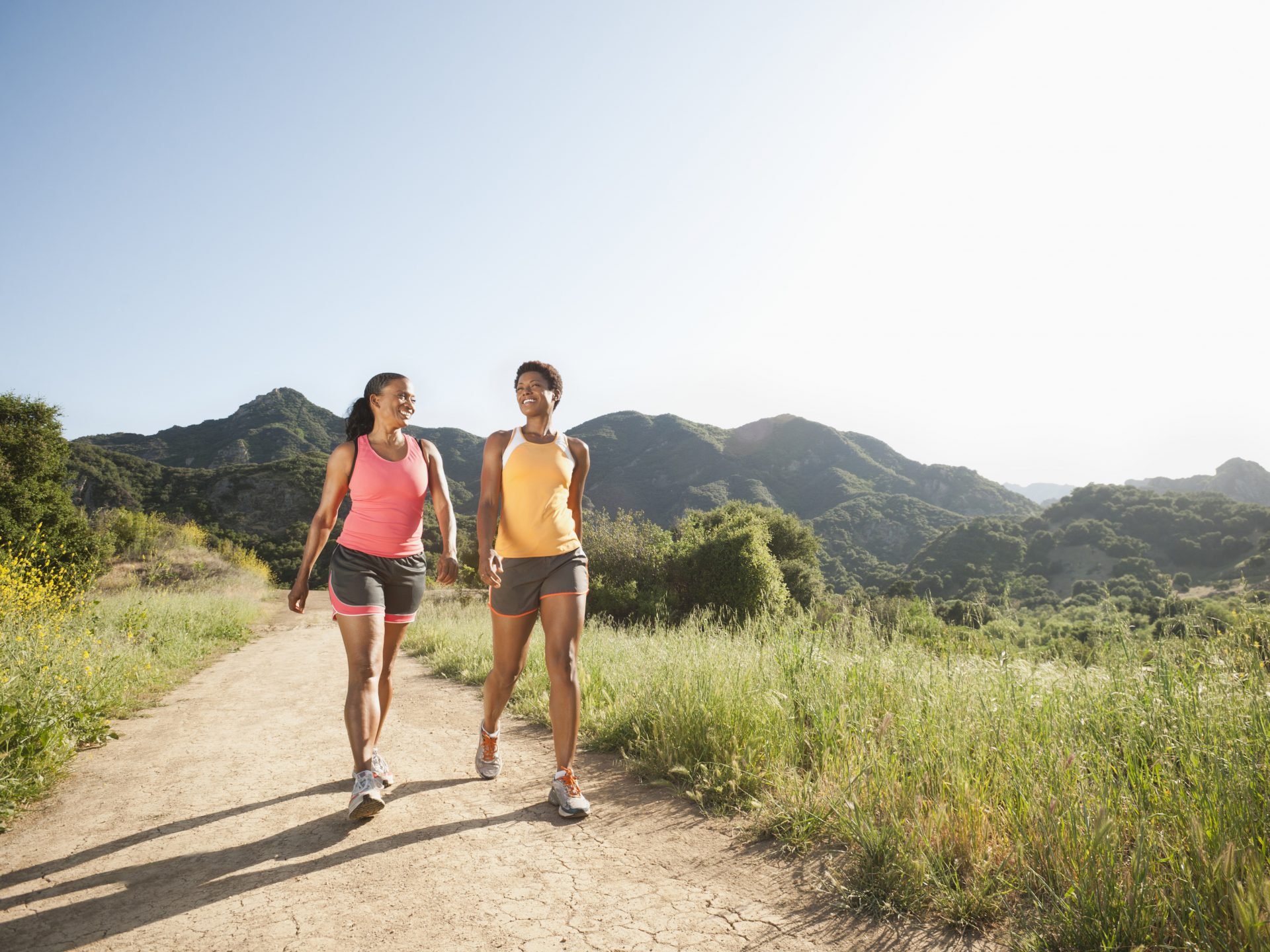The reason walking is such a good full-body workout
Walking does great things for your mental health and cardiovascular fitness, but did you know that a good walk can also help you build muscle in your whole body?
When you want to give your muscles a good workout, the chances are you’ll reach for a dumbbell or work up a sweat with your favourite bodyweight session. But, as it turns out, one of our favourite day-to-day activities is often overlooked as a muscle-building exercise: walking.
If you’ve ever had stiff legs after a long hike or an aching body after a busy day on your feet, you’ll know that walking is actually pretty tough on the body. We tend to laud it as a form of cardio exercise, focusing on the benefits for your heart health and mindset, but good, long walk is actually a great way to work your muscles, too.
You may also like
DOMS after walking: why does hiking make your muscles so sore?
Is walking good for your leg muscles?
“Walking is actually a great work out for your legs,” says Sally Davies, senior physiotherapist from the musculoskeletal therapies team at Bupa Clinics, explaining that as we step, we engage the quads, hamstrings, calves, glutes and abdominal muscles. “All the muscles in the leg work together to provide stability, support and control to the body whilst walking, these movements help to strengthen and condition the leg muscles.”
When we drive the leg forwards, we are engaging our quads and hamstrings to help bend the knee, as well as press off from the ground.
“Your calf muscles also work by extending the ankles, giving your stride momentum. Together with your thighs, they move as a reaction to the foot moulding to the floor beneath and the shin bone rotating internally to allow greater movement in the feet,” Sally says.
She adds that glutes are one of the most powerful muscles in the body, so we use them to contract and stabilise our body during walks. “Over time, the glutes can gradually become stronger with frequent walking,” Sally says.
As well as our lower half, our abdominals are engaged while walking to keep your balance as you shift your weight from one foot to the other.

How to engage more muscles during walking
Strolling along the pavement is one thing, but if you’re looking to really use walking as a key form of exercise, there are some important things to think about.
Firstly, where are you walking? While the treadmill might be convenient in rainy weather, the flat and smooth grounding won’t be the best way to work your muscles. “When walking outside, you can work your abdominals at a higher level as they will be helping you to keep your balance as you cover unbalanced terrain,” says Sally.
You can probably guess that uphill walking is more challenging on your thighs. This is due to how much power and stability we require to push ourselves at different inclines. A study by the University of Colorado found that when walking uphill the hamstrings and glutes power the legs more so than walking on flat ground, whereas on the decline walk, the quads elicited more control over the legs.
“Alternating your route between mixed terrain, flat terrain and hill walking – as well as your speed – is the optimum way to help you work all muscles during your walks,” says Sally.
You may also like
Walking: these 8 simple tips will help you to maximise your walk for extra health benefits
Then there’s the type of walking you do. Nordic walking has been famed for it’s ability to level up your usual hike. Essentially, Nordic walking involves using specially designed poles to propel you forward, and studies suggest that it increases upper body muscle activation by up to 15 times. It’s also been shown to reduce muscle activity in the erector spinae muscles that run along either side of your spine and hip retractor muscles, protecting you from overuse and future back problems.
Ultimately, if building stronger leg muscles is your goal, compound lifts and weight-bearing exercise are excellent things tofocus on. But it’s important to know how activities such as walking impacts your body and how you can change it up to reap even more benefits for your muscles. Now, who’s off to climb some hills?
Follow @StrongWomenUK on Instagram for the latest workouts, delicious recipes and motivation from your favourite fitness experts.
Images: Pexels / Getty
Source: Read Full Article
